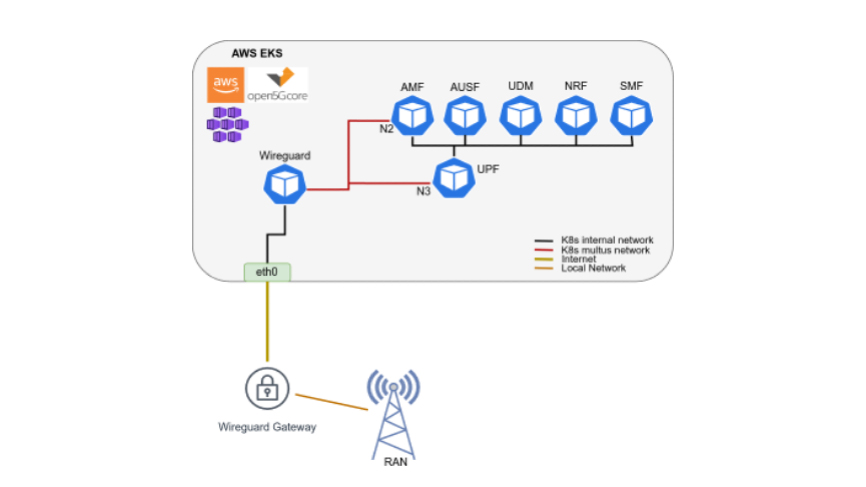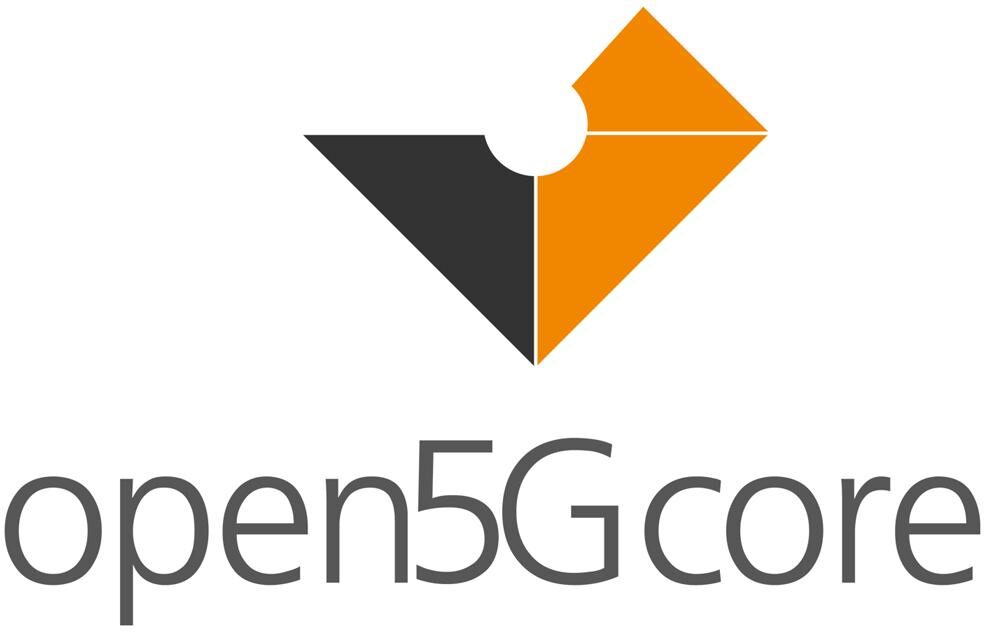Fundamental 5G Core Network Functionality
Open5GCore Rel. 10 implements the essential features necessary for the end-to-end 5G system deployment and aligned with 3GPP Release 17 and 18. Open5GCore Rel. 10 includes a set of new components addressing 5G Standalone Core Network which were developed separately from the previous EPC components. Through this, a genuine 5G core network can be used as parts of the testbeds.
Open5GCore implements the features necessary for the end-to-end 5G system trials and validation:
- Implementation of 5G core network: AMF, SMF, AUSF, UDM, NRF, UPF
- Integration with the 5G NR using the 5G interfaces [N1, N2, N3], 5G NAS and NG-AP
- Implementing control-user plane split with PFCP [N4]
- SBA Control Plane [HTTP/2, OpenAPI, REST]
- Interoperating with many 5G NR SA base stations and UEs
- Interoperating with external NFs/AFs over HTTP/2 or HTTP1.1
All main procedures are supported:
- Registration, Deregistration, PDU Session Establishment
- Service Activation & Deactivation, Paging, Mobility Update
- N2 handovers
Testing (no radio) includes 5G UE and gNB SA Simulation.
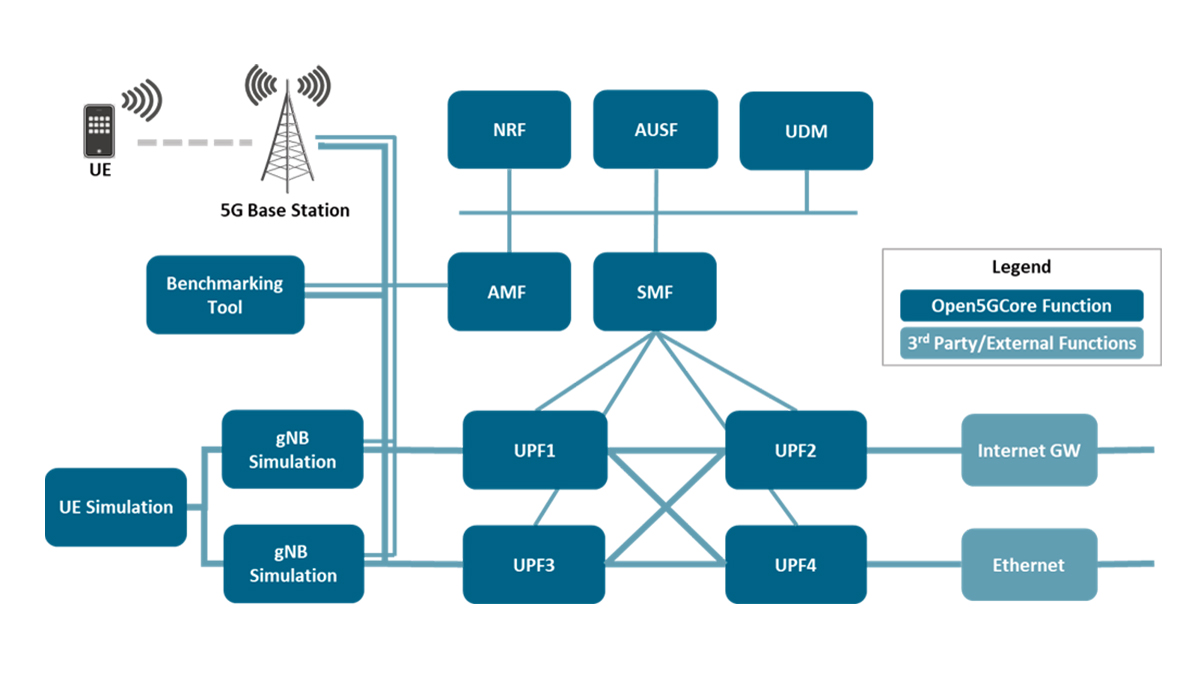
Data Path Diversity Support
Using the Control-User Plane Split (CUPS) feature, Open5GCore implements a large numbed of deployment scenarios for data path diversity:
SMF enables the following scenarios:
- Support for multiple DNs (former APNs)
- Data path offloading for specific bearers (when connected to specific gNBs)
- Congestion triggered, network only data paths change
- Fast handover between Local Service Hosts (with and without IP address continuity)
Towards supporting Time Sensitive Networks (TSN):
- Support for Ethernet bearers
- Support for multi-UE Ethernet bearers
High-performance user space UPF
- No need for dedicated hardware
- Easy to adapt and configure for different situations
- Handling the specific 5G capacityon.
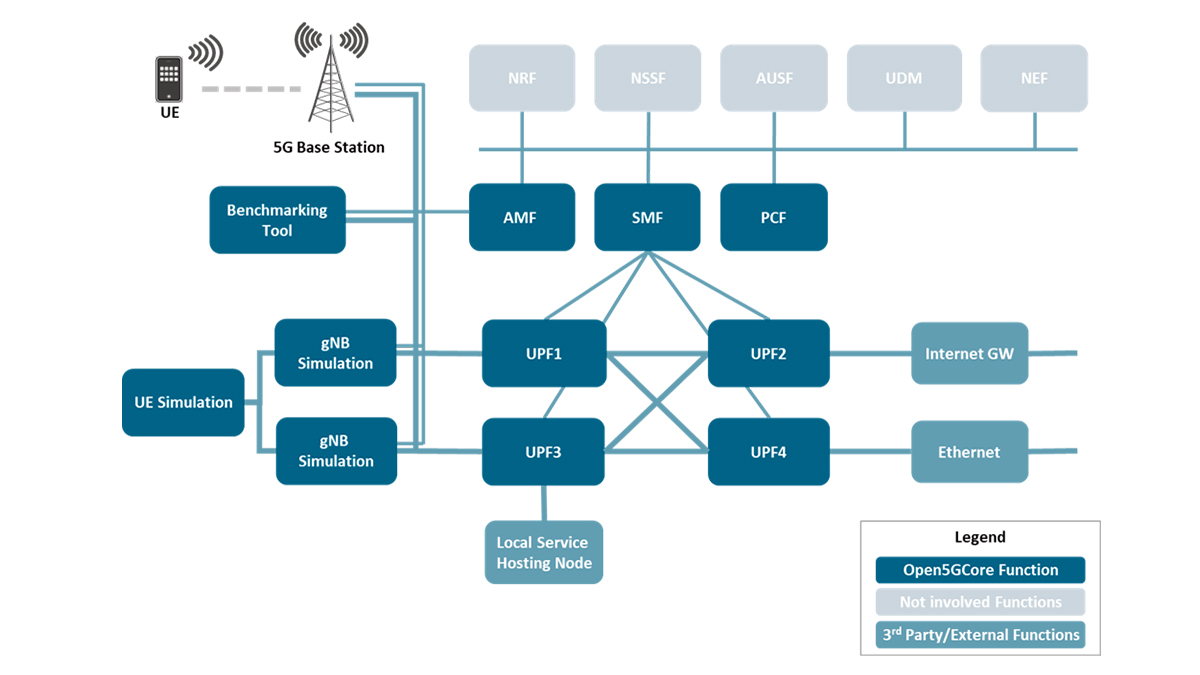
Advanced QoS and Session Management
Open5GCore Rel. 10 includes Open APIs and policy-based data plane adaptation for the subscribers to be able to better control the behavior of the core network from external functions.
Support for dedicated and default QoS Flows
- PCF support for Npcf_SMPolicy Control and Npcf_PolicyAuthorization
- SMF support for Nsmf_SMPolicyNotify
- PFCP extensions (QER, SDF)
- UPF extensions to handle SDF and QFI for GTP-U
- Translator support for Diameter and IMS Rx interface
- UDM support for Diameter and IMS Cx interface
Support for data path selection / Traffic Influence
- NEF support for Nnef_TrafficInfluence
- PCF policy-based decision
- SMF integration of data path diversity
- UDR support for subscription profiles updates
- Extensions for the MCx applications support
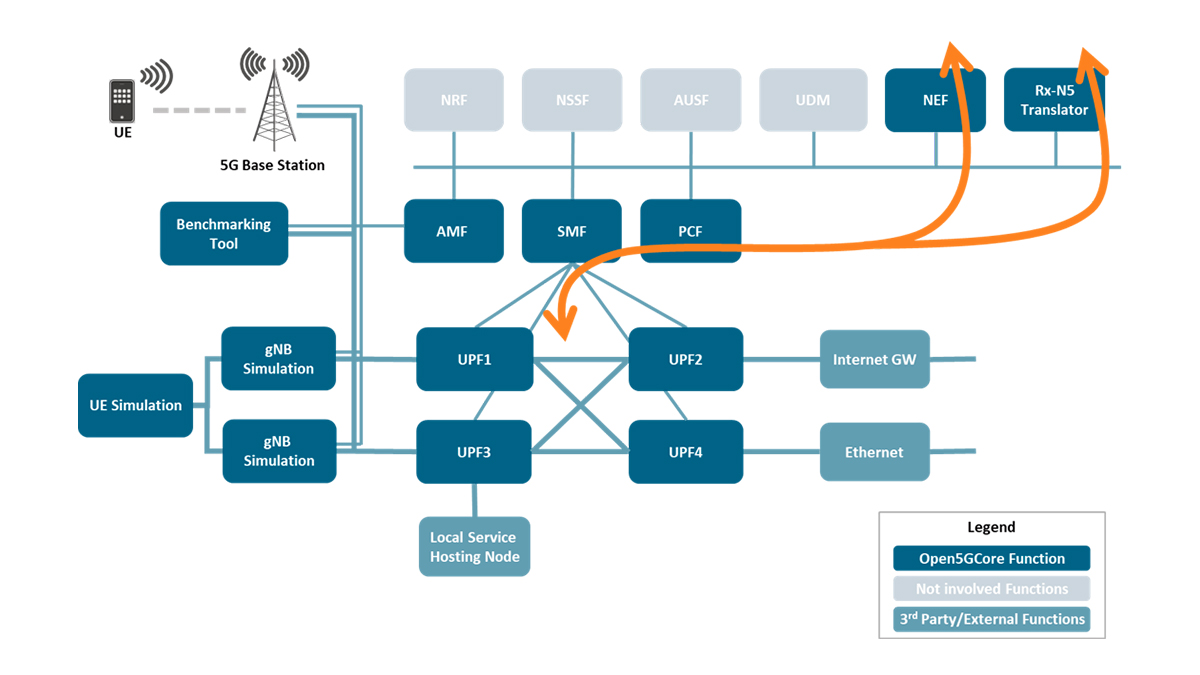
Network Slice Support
Open5GCore includes the fundamental features necessary for the deployment of a multi-slice network.
Support for the seamless control and data plane for multiple deployed slices
- NSSF – basic implementation of network slice selection functionality
- AMF – support for the DÉCOR-like slice selection
- AMF query NSSF for slice identity
- AMF reallocation as part of the registration procedures
- NRF – slice-aware single entity with multiple visibility domains
- UDM – AM subscription data with slide information
- SMF and PCF – independent entities for each slice
- UPF – could be split or shared among multiple slices
- gNB emulator – support for AMF reallocation
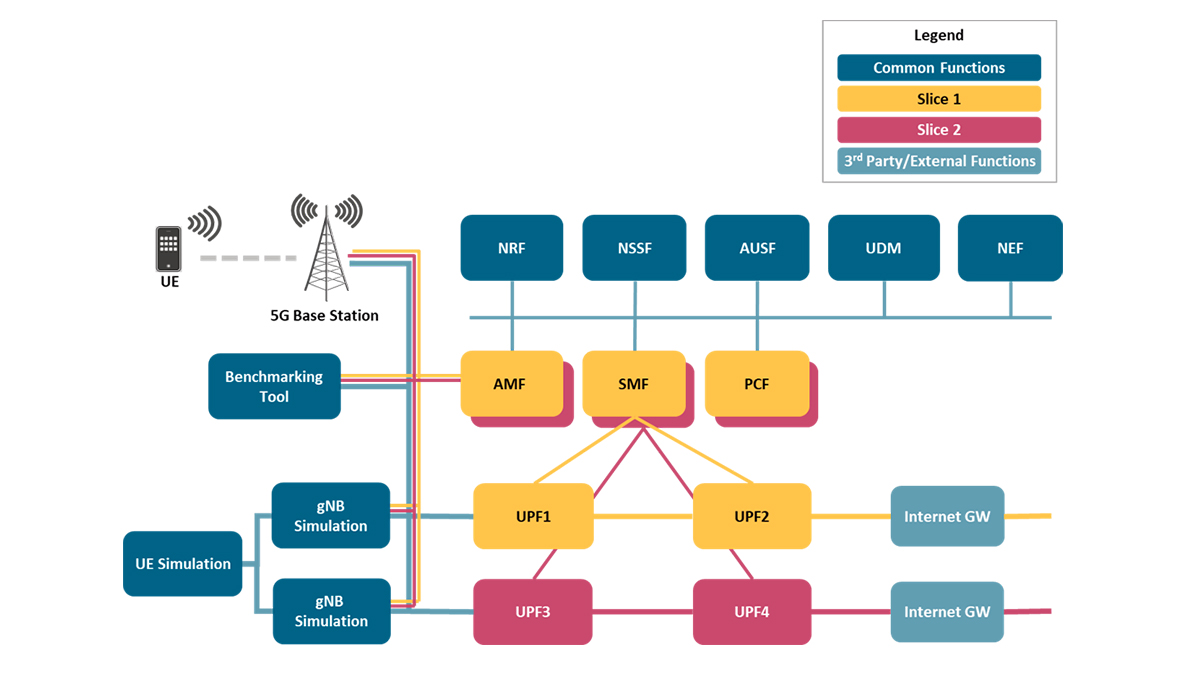
Support for non-3GPP Access
The non-3GPP access support of Open5GCore includes different levels of integration and trust on the wireless link.
Support for untrusted non-3GPP access – tested with WiFi and LiFi
- N3IWF – support for secure connectivity with the UE (NWu) and interconnection with the core network: N2 (NGAP), N3(GTP-U)
- AMF – N1/N2 support for concurrent 3GPP and non-3GPP access
- SMF – support for concurrent 3GPP and non-3GPP access
- 5G UE simulation – N1 support for concurrent 3GPP and non-3GPP access, PDU session handover
Android UE – regular Android app for non-3GPP connectivity
Other support for non-3GPP accesses:
- Over the top integration
- tested with 60Ghz WiFi and Satellite
- OTT connection with UE and the gNB simulation
- Trusted non-3GPP access:
- The UE is connecting to the TNGW without additional NWu security
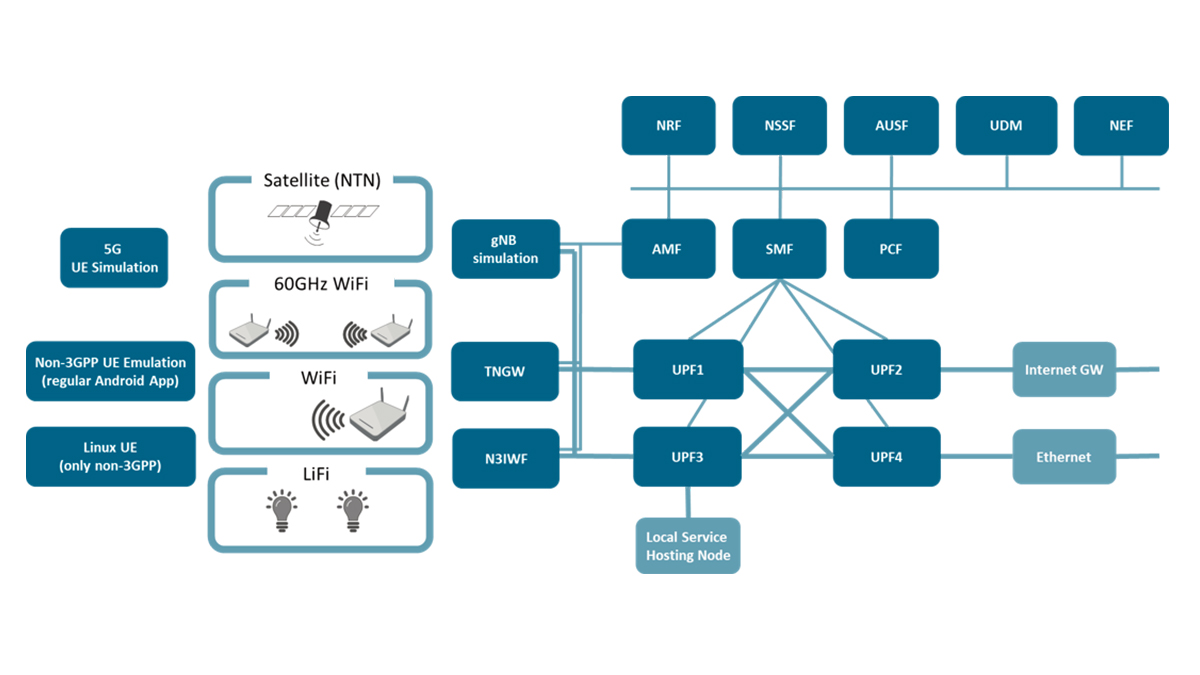
Prototype UE
Open5GCore Rel. 10 offers the porting of the Open5GCore platform for Android and enables further developments towards 6G UE-centric development.
Regular Android App emulating the UE functionality for non-3GPP (emulating not implementing the 5G/4G modem)
Porting of the Open5GCore platform for Android
- Enables further developments towards 6G UE-centric
Supporting non-3GPP connectivity
- Secure connection establishment to the TNGW/N3IWF
- Authentication and authorization to connect to the Open5GCore
- Soft credentials are used/not the SIM card information
- Establishment of a secure data path bearer
- Forwarding of the data traffic through the end-to-end bearer
Support to add new functions like:
- Positioning
- Signal strength
- Access network discovery
- Access network selection
- Network monitoring and reporting
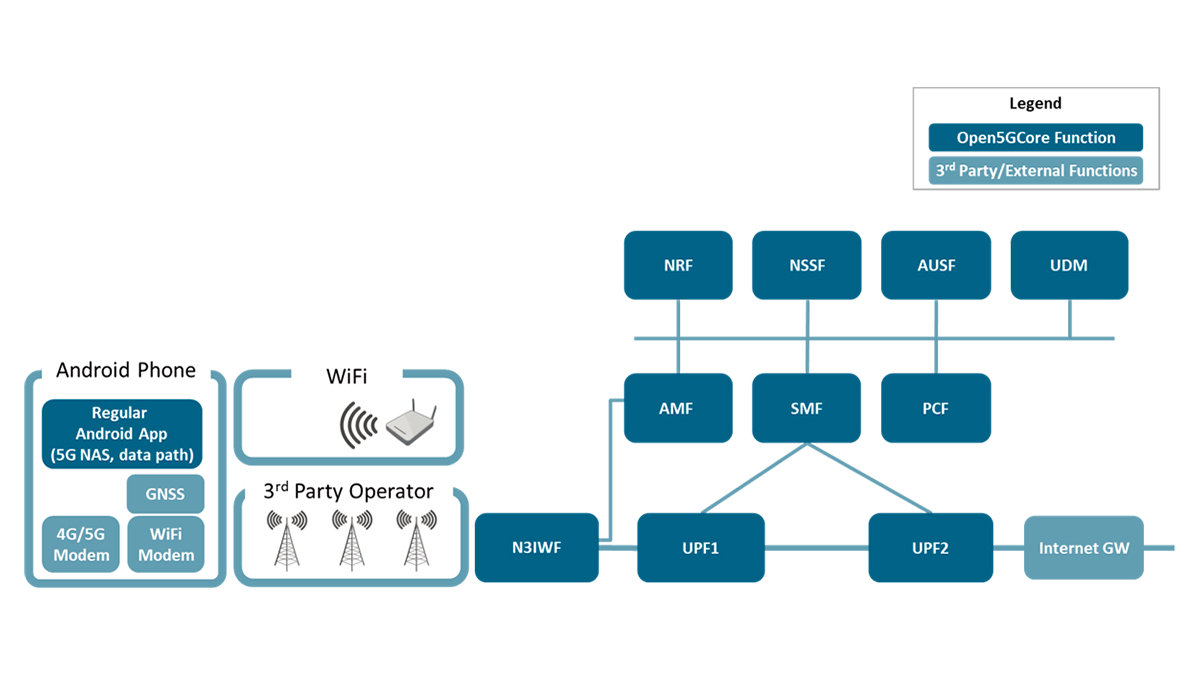
Support for Geographically Distributed Networks
The Open5GCore provides management of the control plane communication for handling interaction between different network locations or domains.
Service Communication Proxy (SCP)
- Control plane aggregator
- Policing the inter-domain control plane exchange
- SCP-SCP inter-domain communication
Network Repository Function (NRF)
- Domain specific NF information aggregation
vSMF-hSMF split including control for:
- Local routed
- Home routed
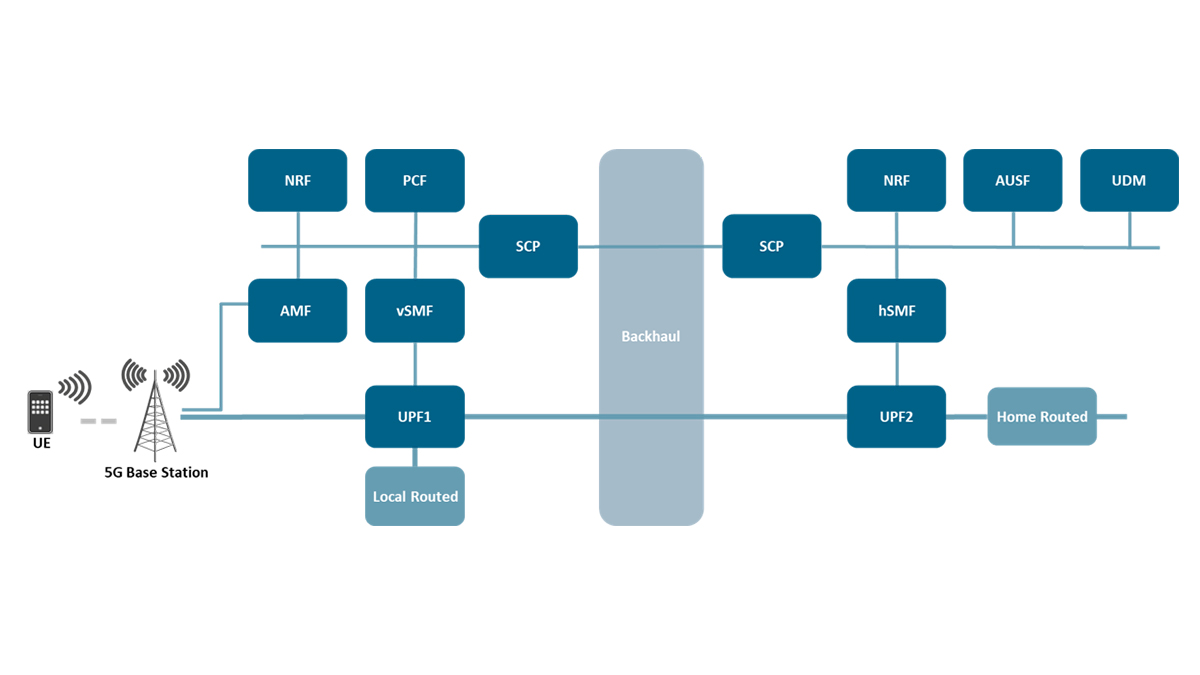
Location Service Support
Accurate location support is enabled by the Open5GCore providing communication and subscriber-oriented processing.
- UE simulation – LPP, can integrate with specific probes and with GNSS
- gNB simulation – NRPPa, can integrate with specific probes
- LMF – NRPPa, LPP, API towards algorithms (not included), Nlmf
- GMLC – Ngmlc
- Can be integrated with a historical location DB
- Can be integrated with prediction algorithms
- LCS Test client
- Demonstrated with GNSS and Linux OS client
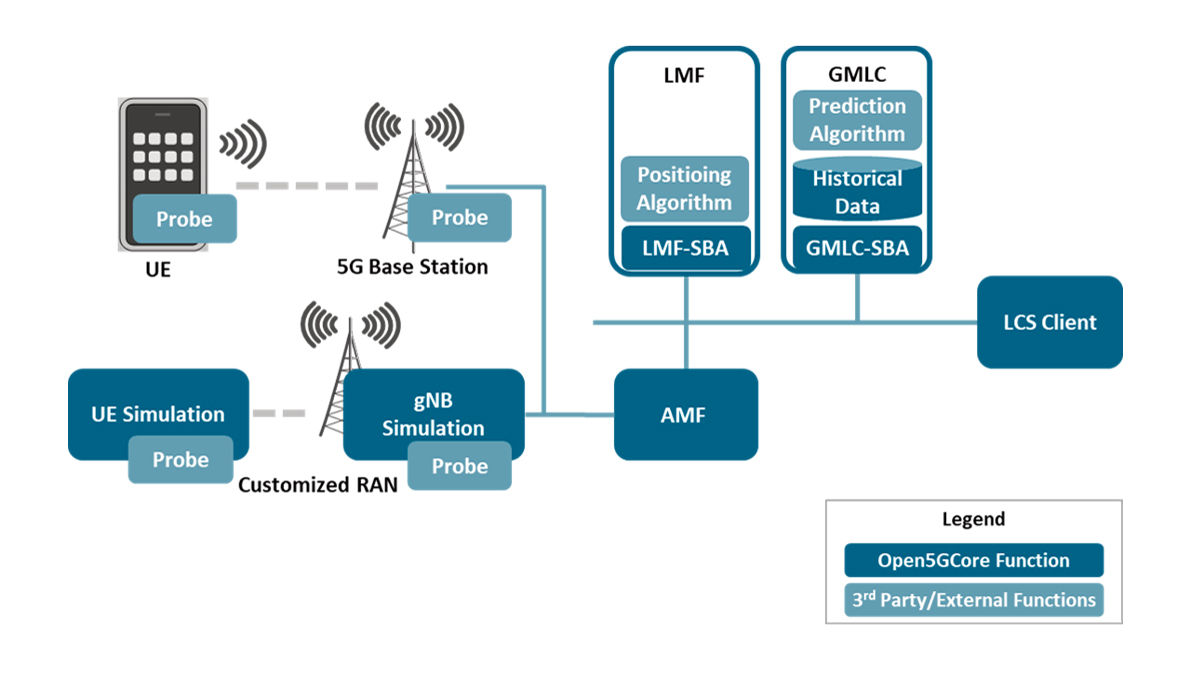
Benchmarking
One of the main missing features of testbed implementations are cost-effective means to benchmark the innovation. For this Open5GCore implements a benchmarking tool providing workloads for the quantitative evaluations of different customized core networks on top of different resource infrastructures as well as the processing of the results in graphical form.
Providing quantitative evaluations of different customized core networks on top of different resource infrastructures
The benchmarking tool and environment include the following functional features:
- Flexible and intuitive gNB configurations
- Flexible subscriber mobility and load patterns
- Support for x10k emulated subscribers and x100 gNBs
- Support for N1/N2/N3 procedures
- Monitoring parameters – 50+ metrics including:
- Quality: Success rate, procedure delay at UE/gNB
- Performance: procedure delay, used compute and storage
- On demand extensible for different:
- RAN topologies or functionality,
- mobility and resource patterns
- interfaces towards the network
The benchmarking tool can be extended on demand for different RAN topologies or functionality, mobility and resource patterns as well as for different interfaces towards the network (e.g. for non-3GPP access).
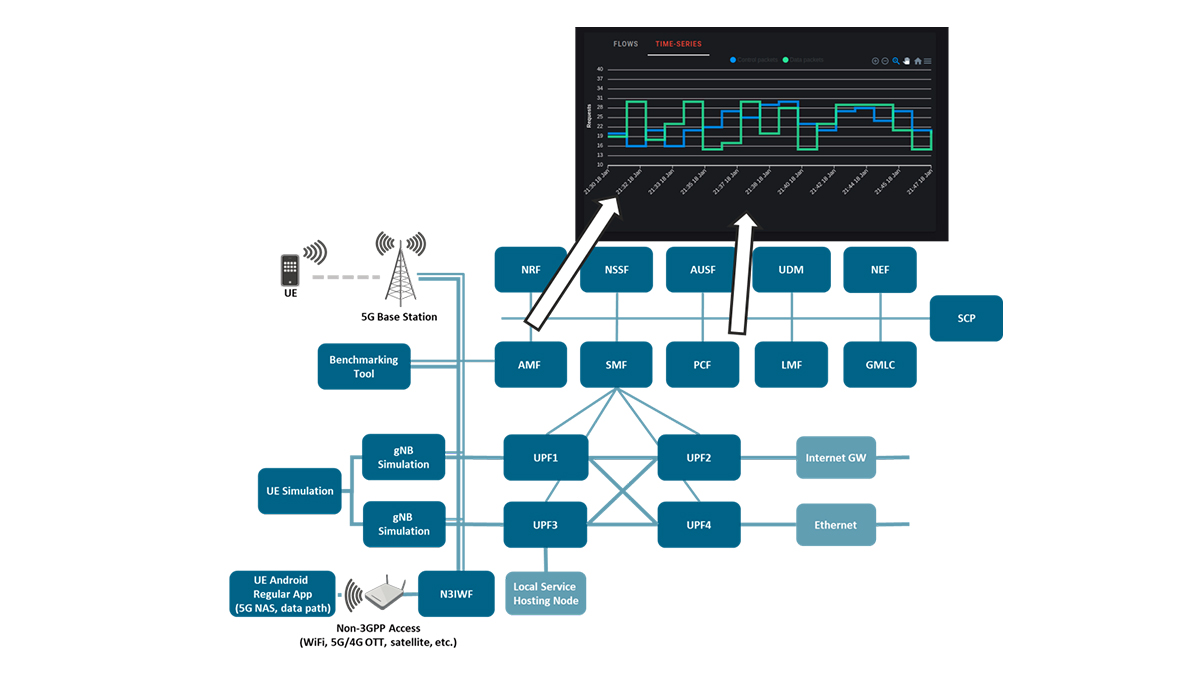
Testbed Management
Open5GCore includes its own management solution adapted for the specific size and complexity of testbed deployments. The management system includes the following components:
- A comprehensive and easy extendable monitoring system
- A Graphana based GUI for time-series metrics
- A GUI to configure the individual UE subscription profiles
- A set of GUIs for the configuring of the different components
- A visualization GUI to easy grasp the status of the network
- A control GUI for the benchmarking functionality as well as easy to understand graphical representation of runtime or benchmarked testing results
- Various utility scripts to configure SIM cards and phones
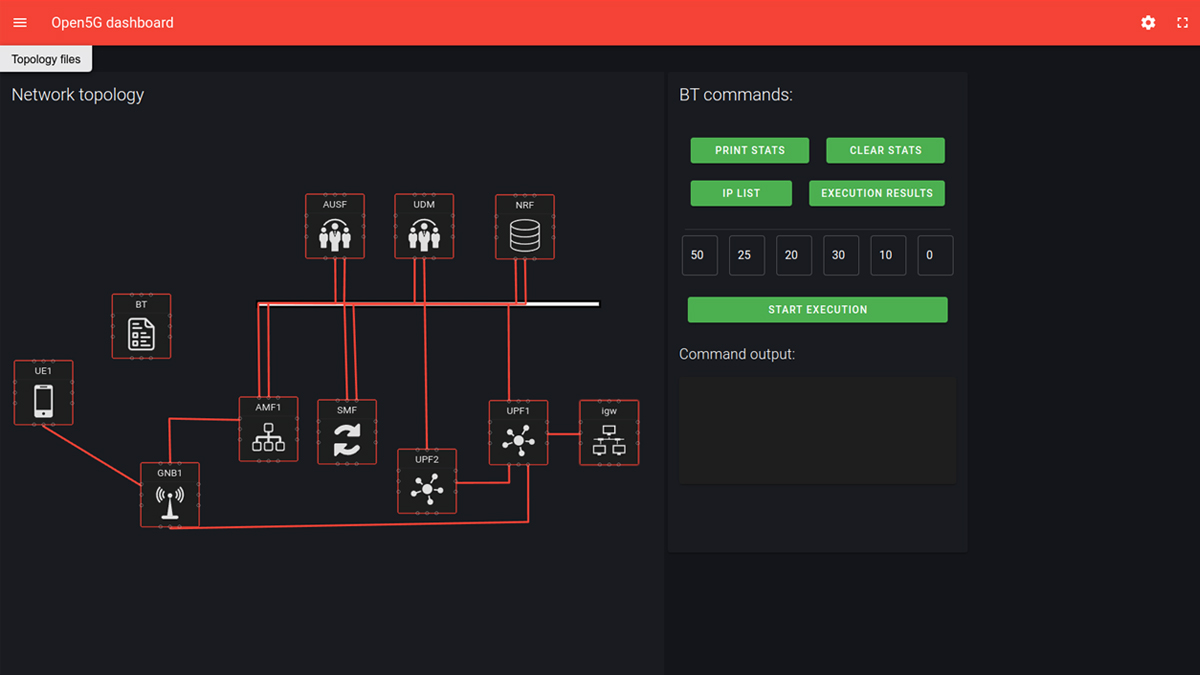
Transport Core Integration
Basis Features
Split of the data traffic across multiple undependable backhauls:
- Edge deployment with local UPF for low latency local communication
- Multiple Backhauls integrated for redundancy (e.g. satellite, terrestrial)
- Secure connections across undependable transport network
- OTT transport for the distributed 5G network
- Monitoring of all backhaul links
- Switching data bearers between links in real time
- Auto-switching in case of link failure
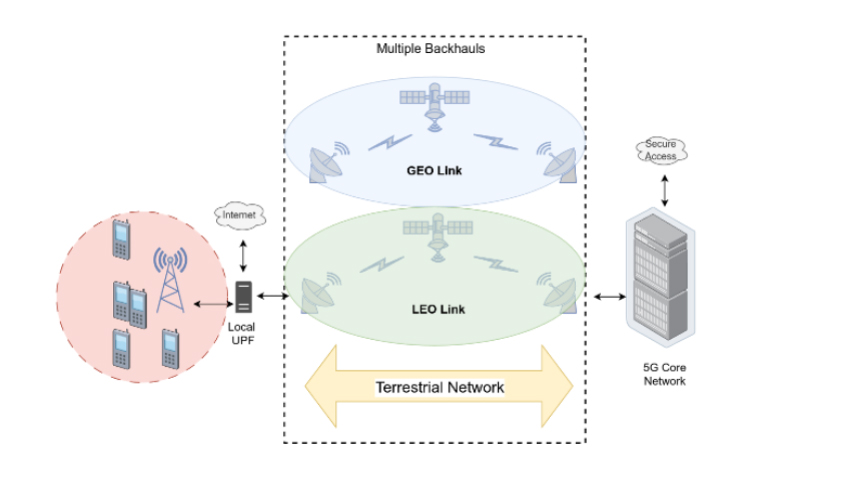
Public Cloud Deployment
Cloud hosted AWS EKS deployment
- Core network deployment on AWS Elastic Kubernetes Public cloud or AWS POST
- Wireguard-based secure connectivity from external RAN over best-effort Internet
- Distributed data path handling:
- In the cloud – for cloud applications
- Offloaded to the Internet with UPF next to RAN
- Multi-cluster/Multi-Region deployment for redundancy and high availability
